How to use basic math to make a smart garage storage plan
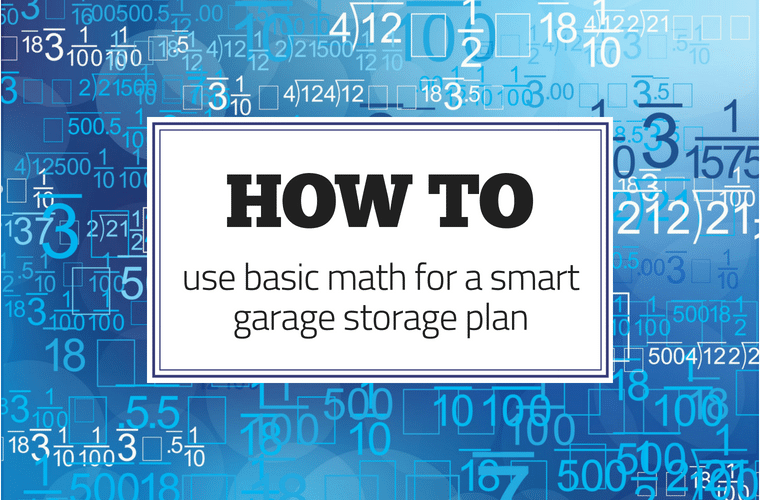
Does your garage resemble your 9th grade Algebra class or worse yet college Calculus class? Not sure you get the connection? Well – they’re both places you’d rather not be? Your lack of a garage ‘storage and organization system’ (if that’s what you can call the cluttered mess today) can cause you to be a victim of too many negative numbers. Think about these bad stats:
- The number of times your spouse has nagged you to clean out the garage.
- The number of times this winter your teeth were chattering and you were swearing under your breath like Ralphie Parker’s Dad in A Christmas Story cleaning off snow and ice from your car. If only you could get rid of all the junk in your garage. Then you could park inside.
- The number of times your face got beet-red in frustration because you couldn’t find the tool, screw or bolt to check off your honey-do list and get back to more important things (does your golf game come to mind?).
Would you like to find a solution to your garage storage and organization problems? I’ll tell you it’s as simple as basic math. You won’t need an advanced class in trigonometry, geometry or worse yet calculus (I still don’t remember how I escaped that course in College).
Below I’ll present 6 logical steps to create a garage cabinetry plan to gain time to enjoy your life and tame the ‘beast’ formerly known as your messy garage. Let’s dig in.
Step #1 – Start with addition by subtraction. Begin by decluttering.
I’m sure you’ve heard the phrase less=more. This is SO true when it comes to the garage. In fact, garages are so overstuffed in the United States that 57% people with 2 car garages can only park one car inside. With the average cost of a new car at $33,560, doesn’t it make sense to move your car inside and get rid of junk?
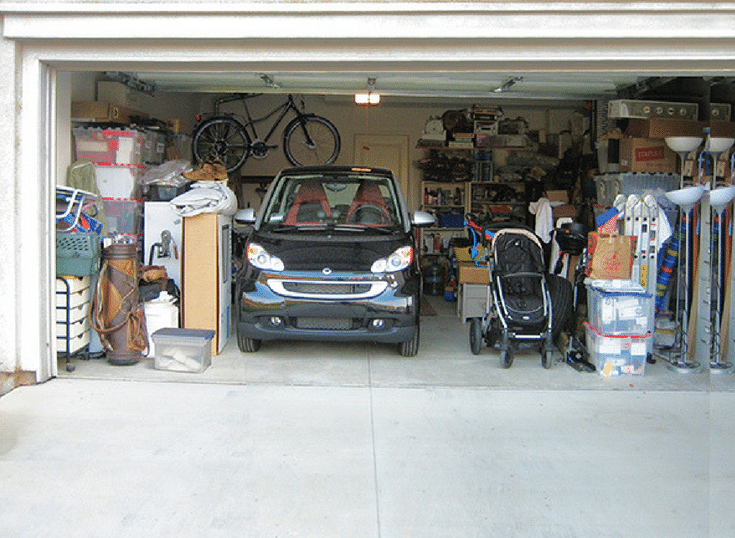
consumerreports.org
The bottom line is most garages are embarrassing. They’re almost as embarrassing as your basement or Crazy Aunt Edna’s hairdo. They need help. This ‘help’ starts with addition by subtraction (AKA decluttering). How can you dig into this ‘tasty’ job? Here’s a plan:
- Start in the Spring. Spring is the perfect (if there is such a thing) to clean out the garage. The temperature won’t have you freezing your butt or baking your buns off.
- Get help from the family. After all they also got you into this mess, they should help get you out of it.
- Start pulling things out. Sort by categories. Put shovels, tools and yard equipment, gardening supplies in one area. Sporting equipment in another. Holiday decorations in another. Miscellaneous boxes in another.
- If it’s broken (and you think you’re going to fix it), people will wonder what you’ve been smokin’. Don’t fall victim to the age-old, “I’m going to fix it someday.” Face facts. In most cases that someday is a cold day in H-E-Double-Hockey Sticks – as you used to tell your kids when they were young.
- If it’s been of no recent use, you must reduce. If you haven’t used the item in over a year the chance of pulling it out again is as likely as volunteering for a root canal. If an item isn’t being used, donate or sell.
After you’ve completed your addition by subtraction (the biggest hassle of all the steps) you’re ready to move on to step 2.
Step #2 Divide (and conquer). Get ‘zoned in’ with garage storage zones.
Just like in math class (sorry to bring math up again) you’ve got to break up complex garage problems into smaller parts – or zones in this case.
To divide (and conquer) your disorganized garage group items together by location, function and depth. The following 7 zones will help you get a grip on your things.
- Zone 1 – The “Drop Zone” – Create a place as you enter your home for bookbags, coats and boots.
- Zone 2 – The “Recycle Zone” – You want to take care of the planet. However, it’s still a pain figuring out where to put the recycling bins in the garage. How about inside a cabinet with a handy trap door with the bins inside so you won’t be able to see them? Locate the recycling cabinet close to the house door. It will transform your recycling into a neat, organized process.
- Zone 3 – The “Side Wall Zone” – Get those rakes and bikes off the floor and eliminate them falling and denting your car. Slatwall systems add organization (and safety) to a garage.
- Zone 4 – The “Mr. Bulky” Zone – Bulk good are EXTREMELY fun (and tasty) if you’re in a candy store (I have to admit the ‘candy blocks’ from the “Mr. Bulky Store’ are my favorite if you’re looking to buy me a gift – ha! ha!). On the flipside, though, large bulky storage in a garage can be tricky. If you’ve got large bins, and don’t want to look at them, using deep cabinets on your garage back wall make sense. In most cases you’ll want double doors on these cabinets, so you’ll have room to stand behind the cabinets and get things out with the garage door closed.
- Zone 5 – The “Frequently Used Outside” Zone – If you love your plants, gardening and sports it makes sense to create an area close to the garage doors for storage. In this zone you’ll want thinner cabinets (because the garage sides walls are thin and you’re closer to the cars) for gardening supplies. For your sporting equipment a slatwall pegboard system with a large fabric mesh bag is smart.
- Zone 6 – The “Workbench” Zone – Eliminate the dust and shaving from cutting wood, pipes and plastic inside the house (and have a place to organize your tools) with a custom workbench in the garage.
- Zone 7 – The Unexpected “Ceiling” Zone – Most people don’t think about the volume of their garage as an asset, but it can be HUGE (or hugely as Trump might say). Ceiling storage units are perfect for low usage items you want to get off the garage floor.
If you’re intrigued about garage zones watch the video below or read How to Use 7 Garage Storage Zones to Unlock Hidden Space.
Step #3 – Find your ‘greatest common denominator’. How to determine the right cabinetry depth.
In math class you heard (or were bored listing) about least common denominators. However, in a garage storage system it’s important to find the ‘greatest common denominator.’ In layman’s terms, what’s the biggest item (or common denominator) you want to fit into any specific cabinet.
When you’re determining the size of a garage cabinet, measure the largest dimensions of your largest bin. Then get the inside (not outside) dimensions of the cabinet. Make sure before you invest in garage cabinetry the biggest item will fit and the doors will still close. If you can’t find, or don’t want to spend enough for a bigger cabinet, you need to change to a smaller bin (wow – that was a burst of genius now wasn’t it – sarcasm intended).
Step #4 – Use simple subtraction to make sure you’ll be able to retrieve your things without having to open the garage doors and pull your car out (and let the cold in).
Picture this.
You’re having Thanksgiving dinner. It’s already booty-freezing in Columbus Ohio (it’s not winter yet, is it?). Your big pre-made platters of appetizers are stored in the fridge on the side of the garage. Since the refrigerator and its door are so deep, the only way you can get the platters out is to move your car out of the garage (and bear the cold). What a pain!
Effective garage planning begins with simple subtraction.
Measure the full depth and width of your garage. Subtract from this measurement the size of your vehicles and the depth of the refrigerator (or cabinet) and its doors (while allowing about 1 ½’ feet for you to stand behind the open door and get things out). Determine if you can open the doors (to your fridge or cabinets) with your garage door shut. If this isn’t possible, your garage storage design needs work!
Step #5 – If you’ve got kids, determine if it’s best to sort in ascending or descending order.
You DESPERATELY want your kids more active and off their cell phones. You’d love to see them playing catch or riding their bikes outside. To make this happen, while also keeping your garage neat, you need to position sporting equipment in ascending order (that’s a fancy math term for smallest near the floor to largest near the ceiling). Put your daughters bike on slatwall or pegboard system near the garage floor so she can pull it down herself. Keep a large mesh bin with balls for your sons and daughters low as well. Make it simple for them to get so they can have fun which does not involve electronics. Store your bikes above theirs.
There is a situation in a garage though where you want to do use the opposite storage approach. This is with dangerous paints, sprays, gas cans and chemicals. Put those as high up inside locked cabinetry (as possible). Accidents can (and do) happen. Hospital bills and health concerns are something you can do without.
Step #6 – Think in multiples for your cabinet sizes to keep costs down
The cheapest way to ‘attempt to’ organize your garage is using open shelving. The problem with this strategy is no matter how hard you try, the space still looks cluttered. The solution is to go with closed durable laminate or metal cabinetry with doors. The problem is they are more expensive than open shelving. The question becomes, how can you keep your costs down?
The best way is thinking in multiples. Most cabinets are made in standard sizes (for example 24”, 30”,36” and 48” are common widths with 16”, 19” and 23” depths standard). If you stick with common sizes your cost will be cheaper than customizing your cabinet depths and widths.
Conclusion
Getting to a place most people have never seen before (an organized garage) is not a simple process. It does require planning. It does require simple math.
It also requires the desire to stop dealing with freezing your butt brushing and scraping off the car you had to park outside during the winter. The desire to not put up with seeing the mess of items stacked haphazardly on open garage shelves. The desire to not have to worry about things falling and denting your brand-new car.
How can I (and my team) help you?
If you would like help developing a plan for your messy Columbus Ohio garage – we are ready for you. Call 614-545-5888) or click here to get your Free 3D garage design.
###
If you’d like more information on garage and home organization (with a bit of bad humor along the way) follow me on Twitter @Mike_Foti or my companies’ @InnovateBuild and @InnovateHomeOrg.
Tags: Columbus garage storage, garage cabinetry, garage cabinetry Columbus, garage planning, garage shelves, garage shelving, garage storage, garage storage Columbus, garage storage plan, garage storage system, garage storage system Columbus
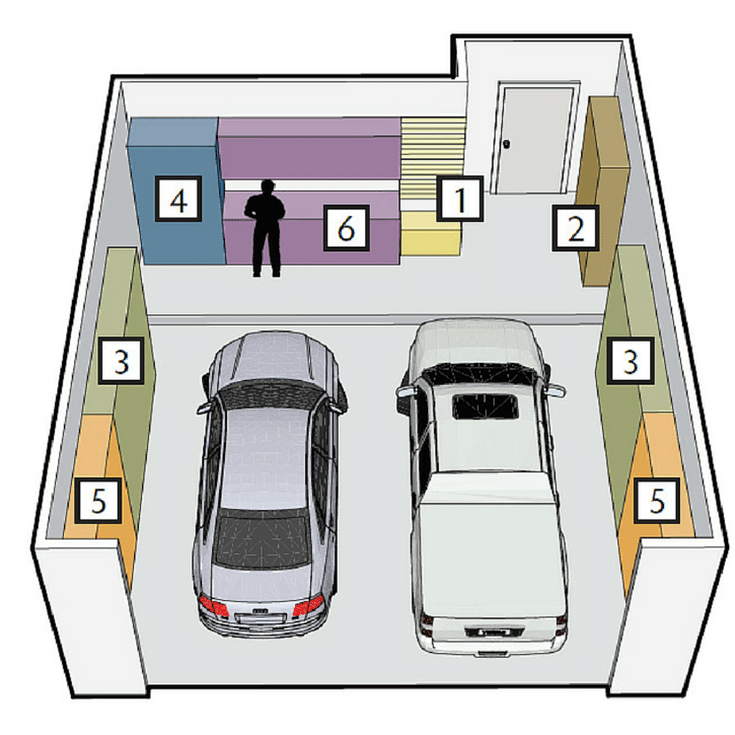

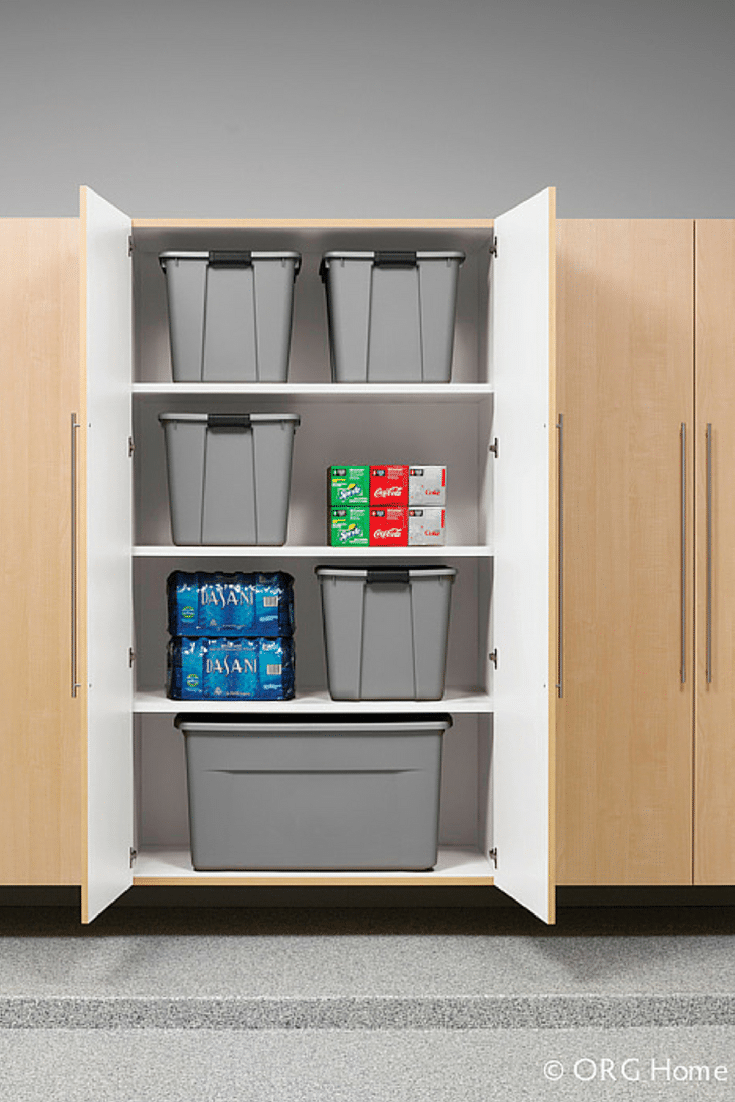

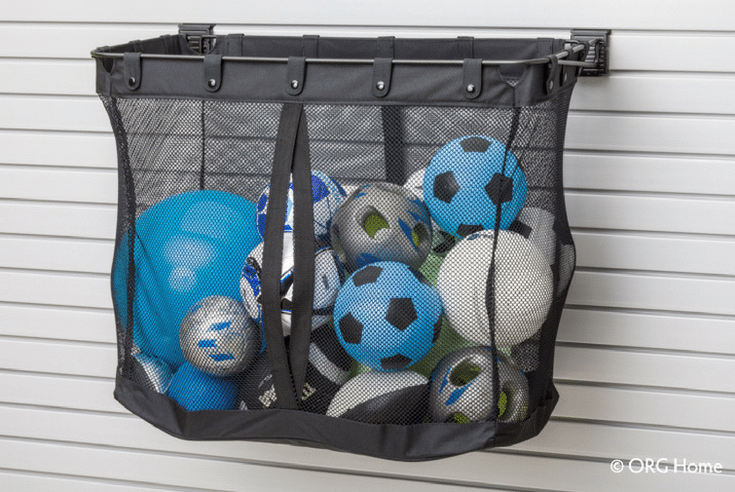

John
| #
One hugely important tidbit to add to your garage planning is measure your vehicles 1st.
Length and width, and placement in the garage before you do any purchases or design, as many garages are minimal in space at best.
Reply
Mike Foti
| #
John – you are SO correct about this. The key to garage cabinetry especially is to be able to open your cabinet doors – with the vehicles parked inside – without having to move your rigs out! This is especially important in cold-weather climates (like my native Ohio) in the winter. And measuring the vehicles is critically important. I also recommend people think through who(m) will use what garage spaces in the long run. For example, if you have teenage kids and they will be driving pretty soon (oh boy!) think which garage you’ll give them (if you have one available). Most likely they’ll have a smaller car and you’ll want them to have the shallowest garage space. If you want to put cabinets in front of their future space see if they’ll have enough room to pull in (especially a new driver which is a scary thing in and of itself – says the Dad (‘er me) with a 17 year old daughter).
Thanks for bringing up this critically important point! Mike
Reply